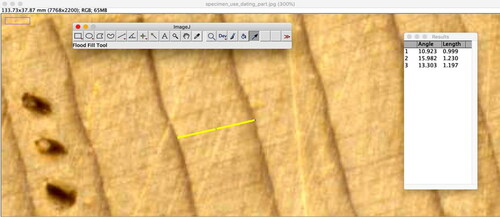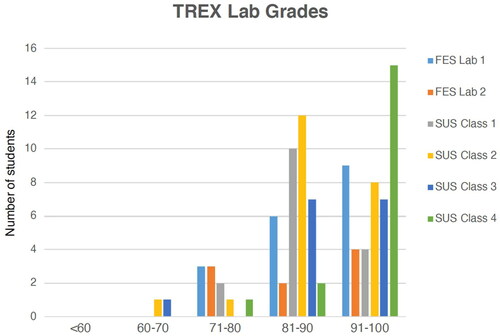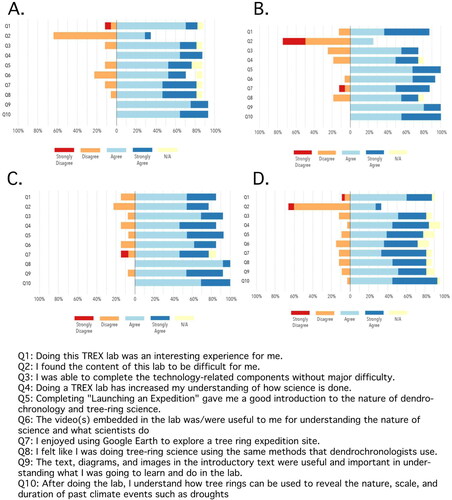Figures & data
Table 1. TREX labs and the classes that they were tested in, number of instructors, number of students, type of evaluation/feedback method, and type of instructor feedback.
Figure 1. (a) Students learn to date and measure tree rings using a high-resolution scan of an original juniper sample from a pilaster at Pueblo Bonito, Chaco Canyon, New Mexico, that was collected in 1922 by A.E. Douglass and Neil Judd. Students are guided to develop their own “skeleton plot” (b) and compare it to the one pictured here to see if they can determine the year the tree was felled to build the pueblo.

Figure 2. A screen capture showing how student measure annual ring width from a high-resolution scan using ImageJ software. The yellow line shows the measurement of one annual ring, in this case the year 2002. The results tab shows measurements from three rings, starting with the ring with three dots on it, an indicator of a century ring, in this case the year 2000.

Table 2. TREX labs, key questions addressed, datasets/multimedia used in each lab, and student tasks (Reproduced with permission from Davi et al., Citation2019).
Table 3. Selected “Stop and Think” questions, aligned to the learning goals, that are embedded within each lab.
Table 4. The survey given to faculty prior to classroom testing, and during the faculty workshop.
Figure 3. Stop and Think question grades for Fundamentals of Earth Science (FES) TREX Lab 1. (light blue, n = 18), Lab 2 (orange, n = 9), and for Introduction to Sustainability (SUS) using a combination of Lab 1 (Part 1) and Lab 2 (Part 1-3), Class 1 (grey, n = 16), Class 2 (yellow, n = 22), Class 3 (dark blue, n = 15), and Class 4 (green, n = 18).

Figure 4. Student survey results for; A. Intro to Sustainability based on a combination of Labs 1 and 2 (n = 71); B. Fundamentals of Earth Science, Lab 1 (n = 18); C. Fundamentals of Earth Science, Lab 2 (n = 9); and D. A combination of Lab 2 and 5 for a two-day field workshop for mixed-majors with two groups of students (n = 33 total).

Table 5. Summary of student feedback after completing the TREX Labs 1 and 2 in Fundamentals of Earth Science.
